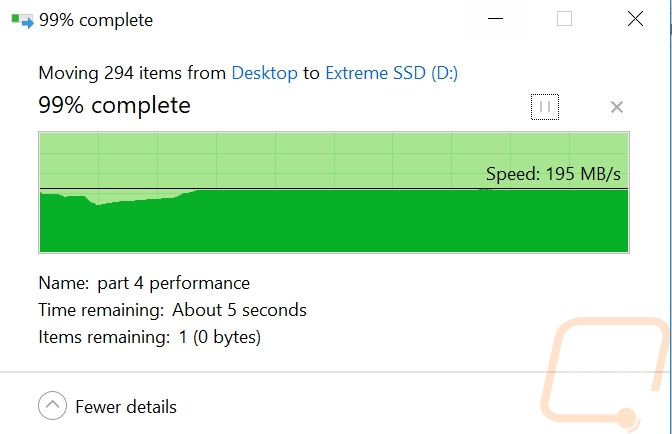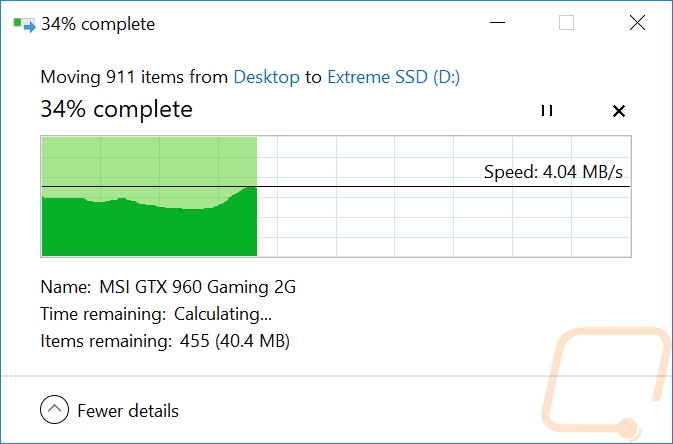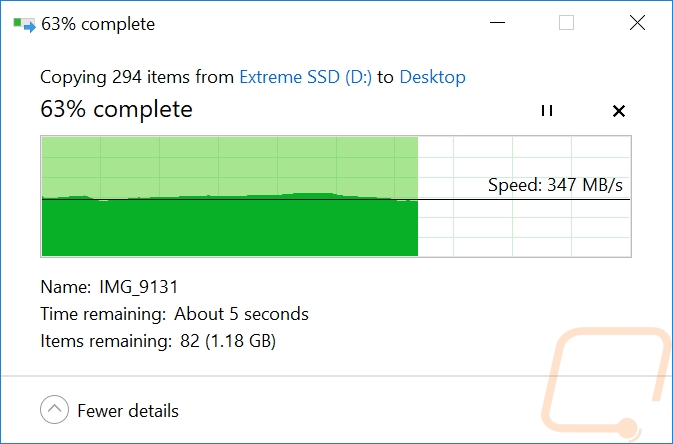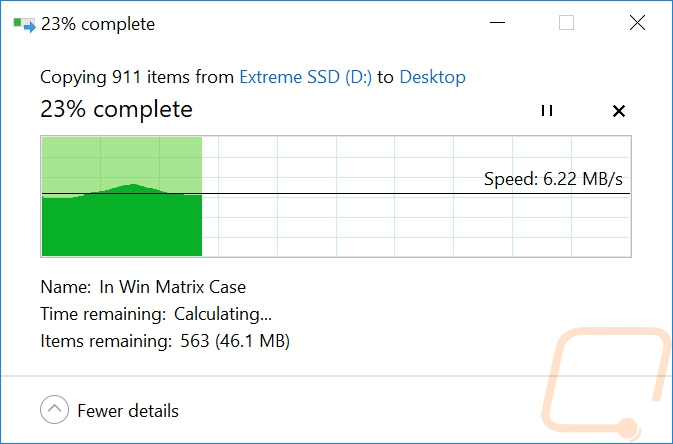Internet bandwidth hasn’t really kept up with the file sizes needed for supporting 4k content creation or even just movies. You can stream it just fine, but when you are pulling huge amounts of data off of your camera on trips and bringing things to watch while you are away you are most likely going to need some more space than what your laptop has. You could go with a basic hard drive, but when you have a lot of files that could take a long time to transfer them, who wants to sit waiting on all of that while you are enjoying a vacation. That is why portable SSDs have been gaining a lot of traction. I personally keep one in my laptop bag all of the time but the new Extreme Portable SSD from SanDisk caught my eye. Its shape could allow you to clip it to your bag to make sure you don’t lose it. So today I’m going to check it out and see how that works out and also test out the performance of the drive.
Product Name: SanDisk Extreme Portable SSD 1TB
Review Sample Provided by: SanDisk
Written by: Wes Compton
Pictures by: Wes Compton
Amazon Affiliate Link: HERE
Packaging
Well the packaging for the Extreme Portable SSD was a lot like the Extreme 510 SSD that I took a look at late last year. It has the same red strip across the bottom with SanDisk branding and the black box overall with the water drops. The drive photo is on the front so you know what you are getting and they have the capacity and read speed in the top right. In our case, this is the 1TB drive that I am testing. Around on the back, there are four features that SanDisk felt were the most important and they have a sentence on each explaining it, repeated over and over in different languages for each feature. The pictures tell you basically what they are though, speeds, water and dirt resistant, shock and vibration resistant, and small and compact enough to fit in your pocket, with two pens apparently.


Inside the drive comes in a cardboard tray shaped to hold it perfectly. Up under the drive, it comes with a safety and warranty guide to keep the lawyers happy and then the cord. The cord comes with an adapter bundled with it as well but I will touch on that in the next section.


Photos and Features
Well here it is, the SanDisk Extreme Portable SSD comes in at 1.951 x 3.787 in. so it is smaller than your cell phone but it does kind of have that shape. The entire outside has a rubber finish on it for some impact resistance. It is IP55 rated, that means it is dust protected and it can handle water jets spraying against it. In other words, you don’t want to toss this underwater but it can handle the rain.

 The top of the drive has the SanDisk logo on it, but for the most part, it is simple and clean. The rubber finish that is all over it has a dotted design on the top and then you have the red hole in the top right corner. This is where you can use rope or a carabiner to attach the drive to something. The SanDisk Extreme 510 Portable SSD that I covered had a hook as well but it was smaller for a keyring enough though the drive was too large to be a keychain, so this is a step in the right direction while still offering a way to keep it close.
The top of the drive has the SanDisk logo on it, but for the most part, it is simple and clean. The rubber finish that is all over it has a dotted design on the top and then you have the red hole in the top right corner. This is where you can use rope or a carabiner to attach the drive to something. The SanDisk Extreme 510 Portable SSD that I covered had a hook as well but it was smaller for a keyring enough though the drive was too large to be a keychain, so this is a step in the right direction while still offering a way to keep it close.

The back of the drive better shows the smooth rubber finish that covers the entire back and wraps around the sides. The sides also have an angled shape that tires to make the drive feel even thinner in your hands. Now the back has the SanDisk logo again, this time it is embossed into the rubber. Then the bottom 1/3 has everything else printed on to the surface. This includes the capacity in the biggest font and the model name and number below that. Then the certification logos take up a lot of the space and they slipped in the serial number as well as a serial number QR code.


At 8.8mm the Extreme Portable SSD is about as thick as a cell phone, really helping its portability. Like a cell phone, it does have a USB connection along the bottom edge. SanDisk went with a Type-C connection so hooking it up doesn’t require figuring out which way is up and down then trying it twice more before it actually fits like a normal USB connection.

To hook up to that Type-C USB connection, SanDisk also includes a cable. The cable is a Type-C to Type-C cable and it is extremely short, just long enough to plug into your device and hang. They also include a Type-C to Type-A adapter that is designed to fit the end of the cable. I actually lost the similar one for our WD drive, I kind of wish there was a way to hook it to the cord so it can’t walk off when it isn’t hooked to the end.

Just for clarity, while I love getting cool swag, I also like to document it with you, the readers as well. That way there aren’t any weird hidden deals going on, not that a carabiner would sway me. Anyhow this carabiner does not come with the drive, but SanDisk sent one over. It's actually a shame because it fits perfectly with what I love the most about this drive. That hole in the corner is bagging to attach the drive to something and a carabiner does that great.


Performance
Before diving into performance, I ran CrystalDiskInfo to take a look at what was inside of the drive. What I found was the SanDisk SD9SN8W1T00. This is an M.2 SATA based drive that they sell in capacities up to 2TB, sound familiar? Now using a normal drive inside of a portable drive isn’t unusual or a bad thing at all. Just about every portable drive does this with 3.5/2.5 hard drives as well. It is just nice to be able to know more information about the drive inside. Check out that data sheet linked.

So we know SanDisk said we should see up to 550 read speeds. Well in CrystalDiskMark we weren’t far off with 545.5 MB/s but its those write speeds that were important to me and 481.9 MB/s isn’t too bad. Being a SATA based drive that is the big limitation here but that is more than enough performance for most people. It is also much faster than the 510 from SanDisk that I tested last year and the WD My Passport SSD as well. Both of those were in the 300’s. Remember you will need a USB 3.1 connection to get the full bandwidth here, USB 3.0 will be capped in the low 300’s.

In Anvil’s Storage Benchmark things were a touch slower on the rear speeds and down in the mid 200’s for write speeds. Rear IOPS weren’t bad though but were way off on the write speeds. Rear IOPS were about double the 510 but I don’t know why it fell on its face so hard with the write IOPS.

I don’t know that I am a fan of the recently updated ATTO Disk Benchmark now, its IO results didn’t make sense. But the rear and write speeds here were really good, peaking at 499MB/s for writes and 533MB/s for reads.

All of the other tests are great and all, but really the only test I was wondering about is our real world transfer tests. I ran three of them using three different file types/sizes. These are all situations that you would be using your portable drive to backup or transfer files. The first was copying a large file size with a movie file. Now, this is the fastest of the three and came in at 220MB/s, you can see where it peaked and stayed right there. The second picture was showing transferring large photo files, these are much smaller than movies but still big files so you can see the speed writing to the drive was just a little slower at 195MB/s. Last I packed a folder with nearly every review that I have ever written. These are small file size word documents and that slows things down significantly. The write speed was down to 4.04 MB/s here.

Movies - Write Speeds

Pictures - Write Speeds

Word Documents - Write Speeds
The other half of the real world testing is the same three tests only moving them from the Extreme Portable SSD back to the PC. This is looking at drive rear speeds. So the movies transfer back much faster at 421MB/s, still not up to the max speeds seen in the synthetic tests but not bad! The pictures aren’t far behind at 347 MB/s and as expected the small word document files were down at 6.22 MB/s.

Movies - Read Speeds

Pictures - Read Speeds

Word Documents - Read Speeds
Overall and Final Verdict
Well coming in I wasn’t really expecting much, both the previous WD and SanDisk portable SSD drives that I tested last year were quick and with this still being based on a SATA M.2 drive there is only so much headroom. But I was impressed with the performance bump that the Extreme Portable SSD showed. There is now no big gap between running this over the USB interface than the drive inside being plugged into M.2. That in itself is a big accomplishment, even if it is overshadowed a little by announcements this week of NVMe based portable drives. I did have some weird numbers when it came to write speed IOPS, but beyond that, it outperformed the other drives by a large margin.
The form factor is also a lot better than the last SanDisk portable drive that came into the office. The 510 was a good drive, especially if you need something to take a beating. But this new design is a lot easier to slide into your pocket or into the pocket of your laptop bag. The new design still seems to be as durable and the rubber coating is easier to hold on to than the WD design as well. The move to type-C is welcomed just to avoid those weird issues where it takes three tries to plug in the USB plug the correct way up. Including the adapter is also important as well, only I hope I don’t lose it this time. I wish they would design a way to keep it attached to the cord when not being used as well.
The big eyelet or hole in the drive is perfect for use with a carabiner and I think that is one thing they could improve. Including a carabiner would continue to push the “extreme” focus of the SanDisk line and allow you to hook it right to your laptop bag.
As for pricing, the 1TB model that I tested today has an MSRP of $299.99 but it is available both directly from SanDisk and from Amazon for $279.99. Compared to a spinning portable drive that isn’t cheap, but I was curious how it would compare to some of the other SSD based drives. The WD Portable that I reviewed is currently $249.99 for the 1TB model, the Samsung T5 is selling for $279.99 and the ADATA SD700 1TB is $219.99 but its speeds are a little lower. In other words, the Extreme Portable SSD 1TB seems to be priced about right when compared to the rest of the market. The 250GB model can be picked up for $94.02 if you need durable storage with SSD speeds at a lower price point, but I think most people who need the transfer speeds will also need the 1 and 1 TB capacities. If not a flash drive might do what you need it to do.


Live Pricing: HERE





